Abstract
The concepts of behavioral economics have proven to be useful for understanding the environmental control of overall levels of responding for a variety of commodities, including reinforcement by drug self-administration. These general concepts have implications for the assessment of abuse liability and drug abuse intervention and the formulation of public policy on drug abuse. An essential requirement is the ability to compare the demand for different drugs directly in order to assess relative abuse liability, and to compare demand for the same drug under different environmental and biological interventions to assess their ability to reduce demand. Until now, such comparisons were hampered by the confounding effect of varying drug doses and potencies that prevent quantitative comparisons of demand elasticity--sensitivity of consumption and responding to the constraint of price (effort). In this paper we describe a procedure to normalize demand-curve analysis that permits dose- and potency-independent comparisons of demand across drugs. The procedure is shown to be effective for comparing drug demand within and across the drug classes. The technique permits a quantitative ordering of demand that is consistent with the peak levels of responding maintained by the drugs. The same technique is generalized for the comparison of other types of reinforcers under different biological conditions.
Full text
PDF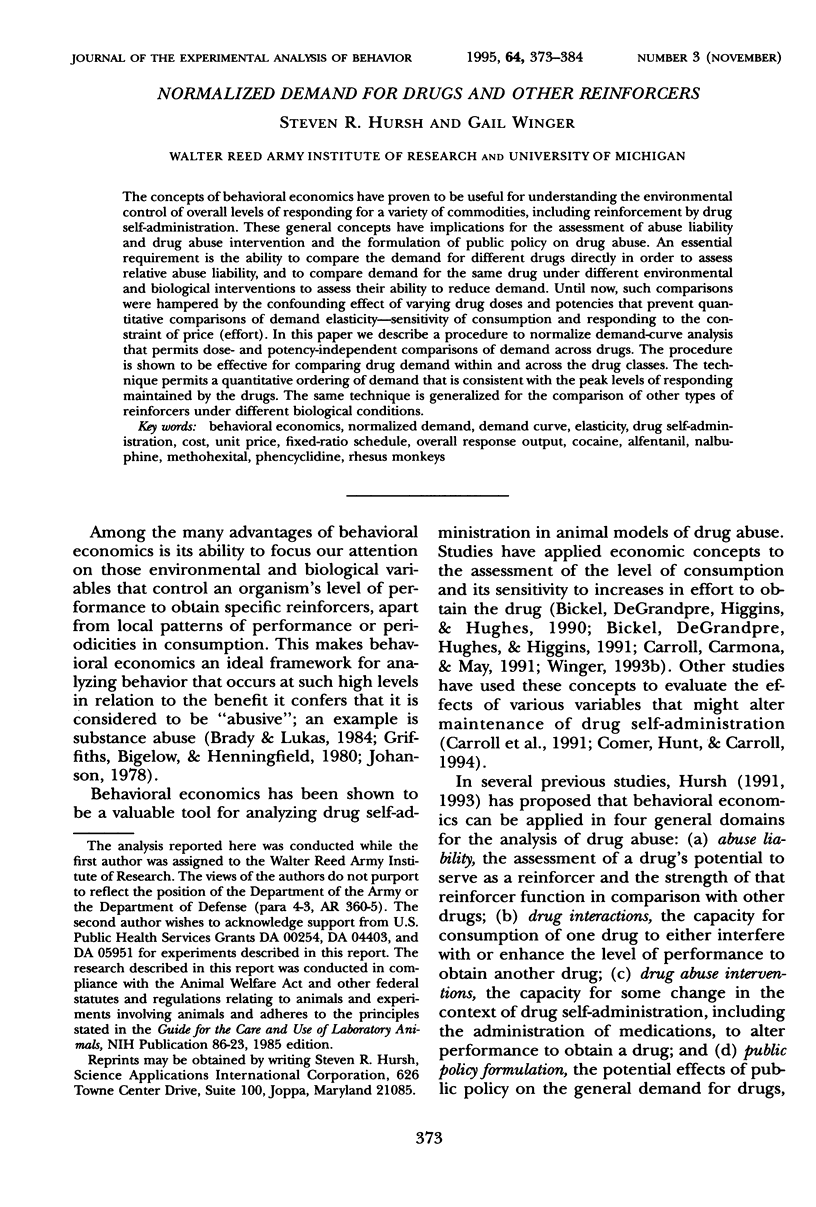

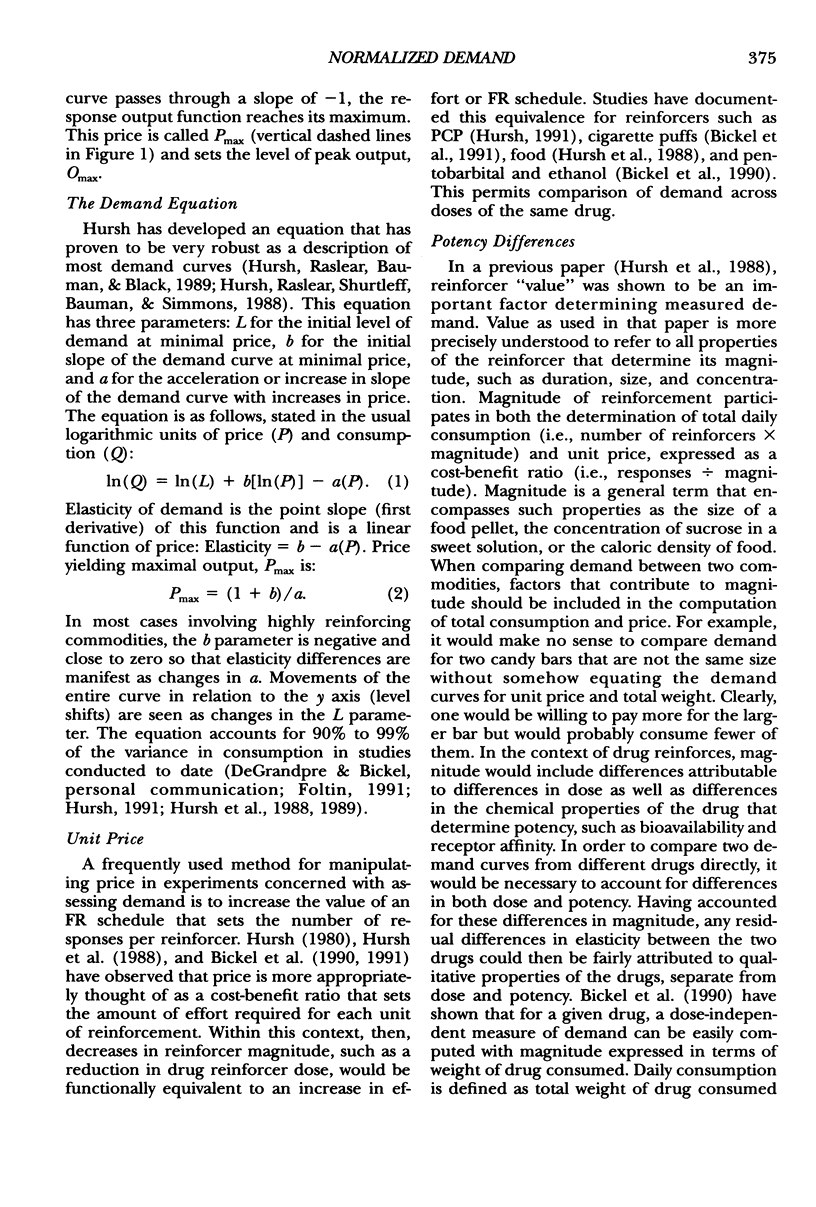
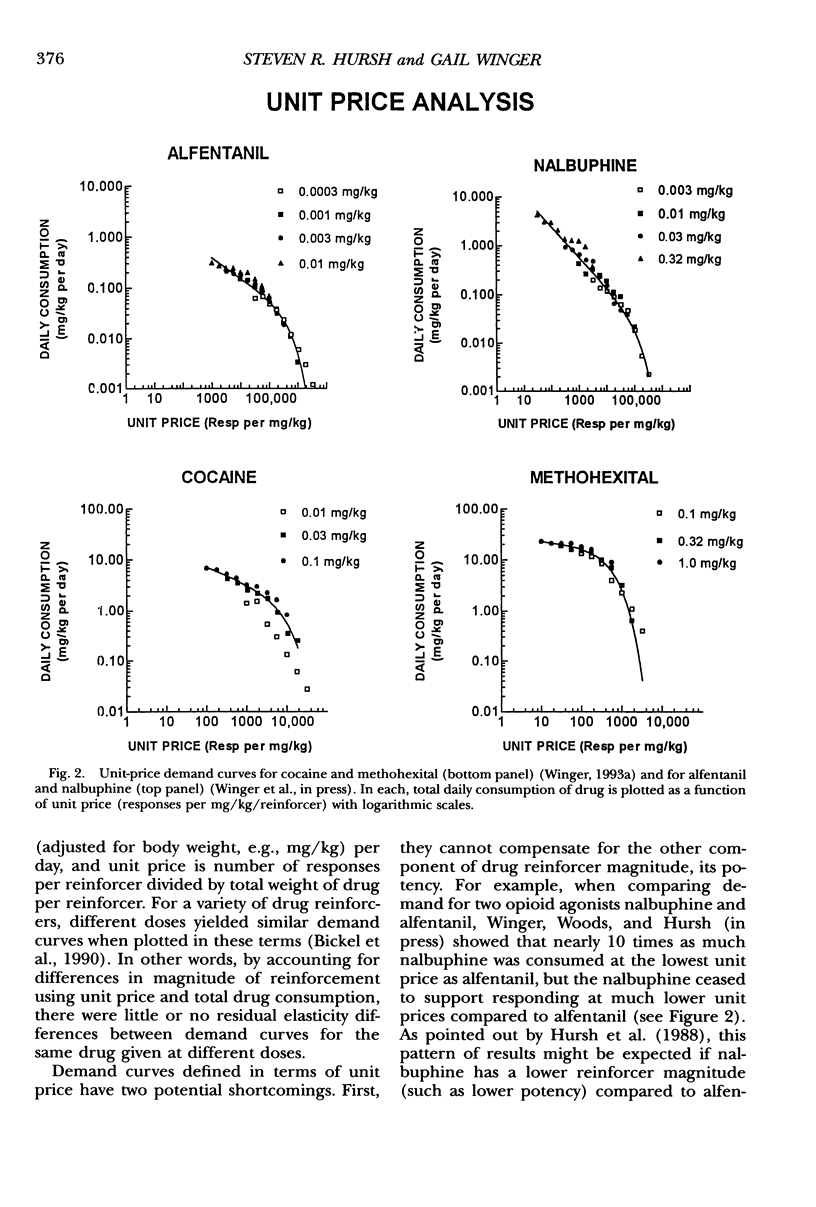



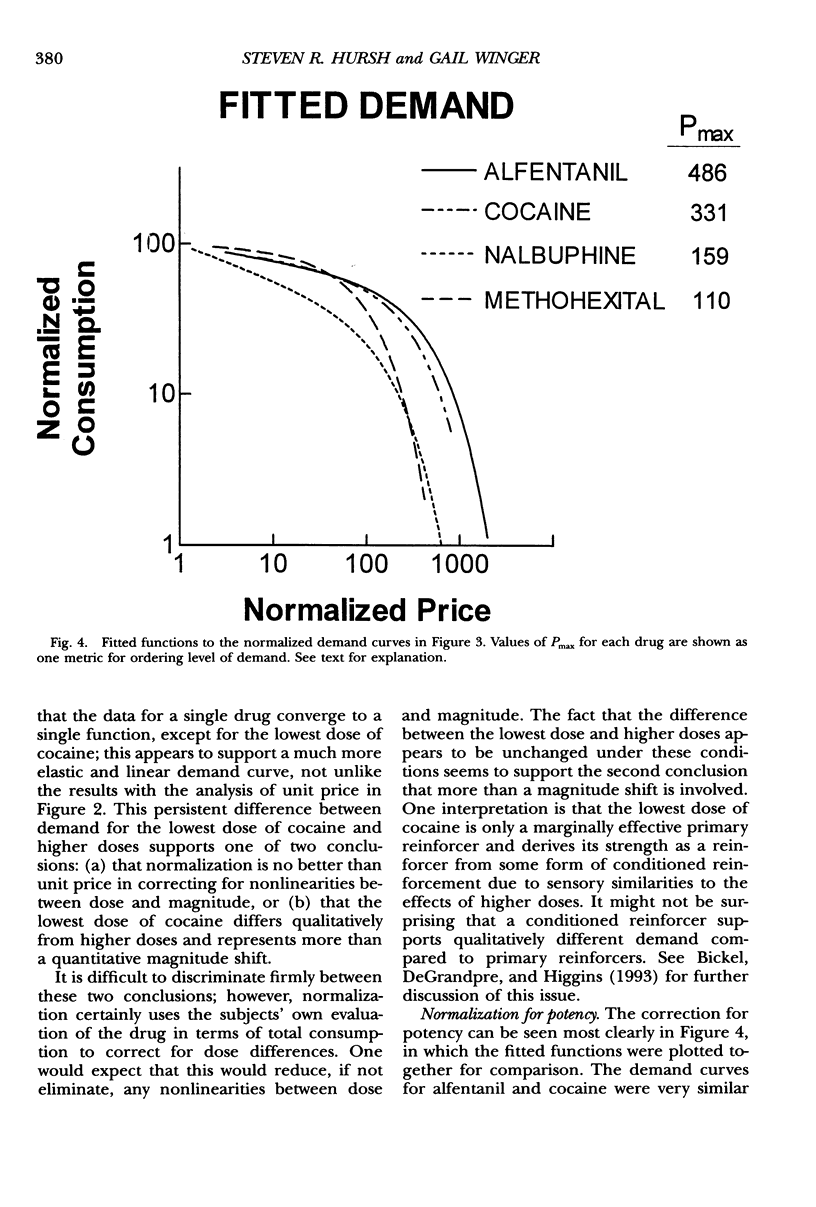
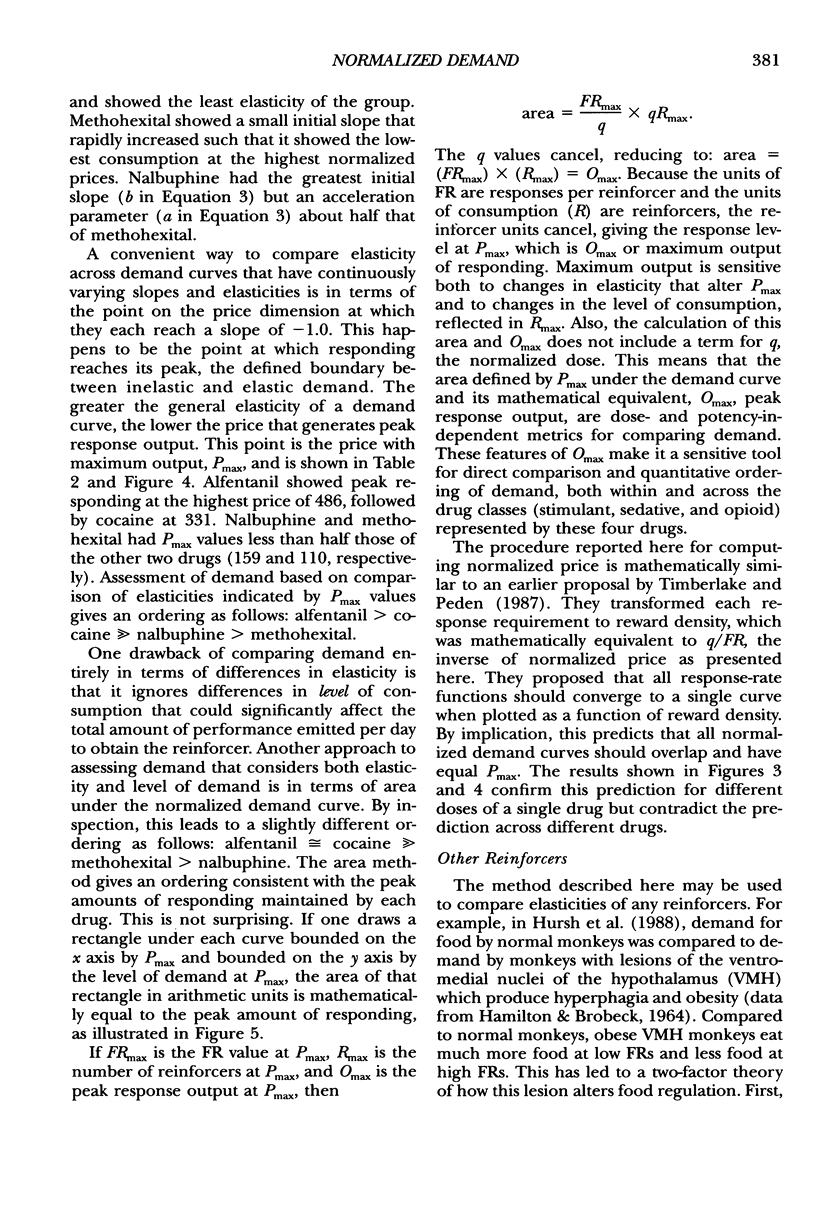


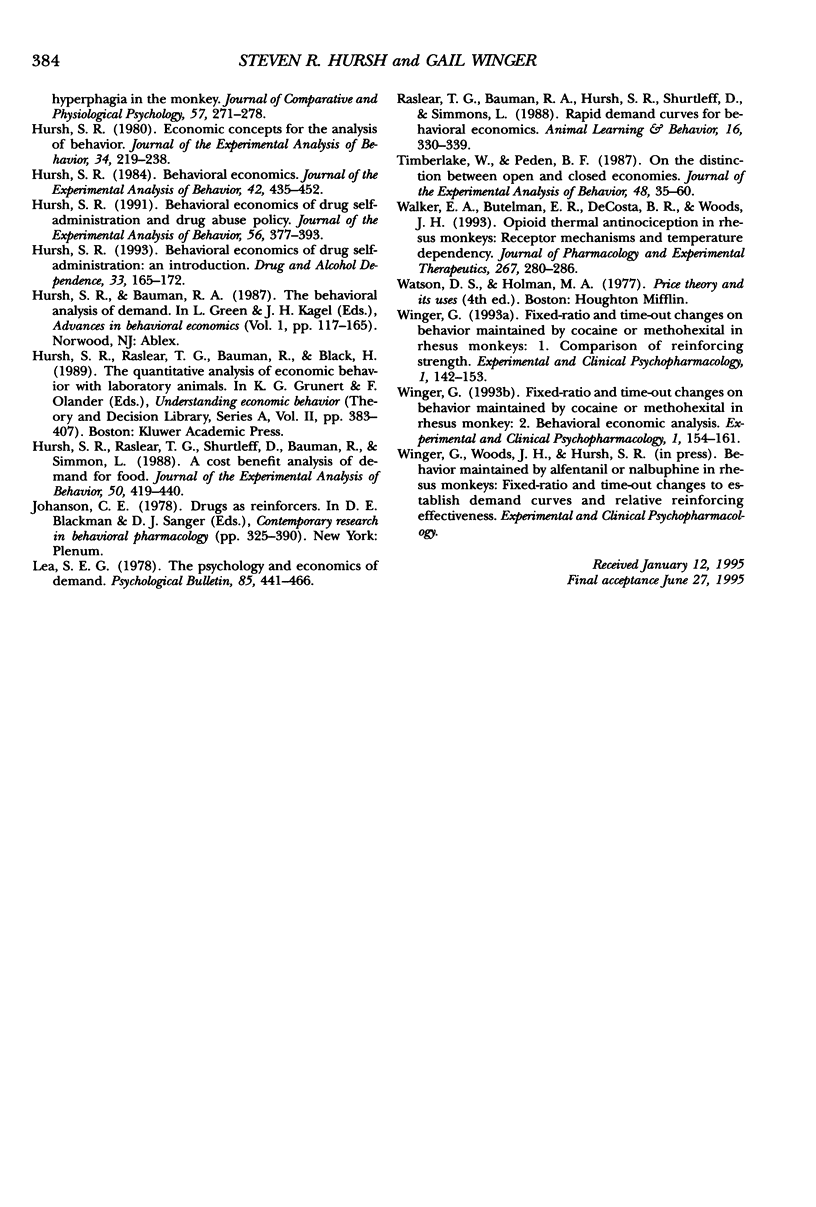
Selected References
These references are in PubMed. This may not be the complete list of references from this article.
- Bickel W. K., DeGrandpre R. J., Higgins S. T. Behavioral economics: a novel experimental approach to the study of drug dependence. Drug Alcohol Depend. 1993 Sep;33(2):173–192. doi: 10.1016/0376-8716(93)90059-y. [DOI] [PubMed] [Google Scholar]
- Bickel W. K., DeGrandpre R. J., Higgins S. T., Hughes J. R. Behavioral economics of drug self-administration. I. Functional equivalence of response requirement and drug dose. Life Sci. 1990;47(17):1501–1510. doi: 10.1016/0024-3205(90)90178-t. [DOI] [PubMed] [Google Scholar]
- Bickel W. K., DeGrandpre R. J., Hughes J. R., Higgins S. T. Behavioral economics of drug self-administration. II. A unit-price analysis of cigarette smoking. J Exp Anal Behav. 1991 Mar;55(2):145–154. doi: 10.1901/jeab.1991.55-145. [DOI] [PMC free article] [PubMed] [Google Scholar]
- Carroll M. E. A quantitative assessment of phencyclidine dependence produced by oral self-administration in rhesus monkeys. J Pharmacol Exp Ther. 1987 Aug;242(2):405–412. [PubMed] [Google Scholar]
- Carroll M. E., Carmona G. G., May S. A. Modifying drug-reinforced behavior by altering the economic conditions of the drug and a nondrug reinforcer. J Exp Anal Behav. 1991 Sep;56(2):361–376. doi: 10.1901/jeab.1991.56-361. [DOI] [PMC free article] [PubMed] [Google Scholar]
- Comer S. D., Hunt V. R., Carroll M. E. Effects of concurrent saccharin availability and buprenorphine pretreatment on demand for smoked cocaine base in rhesus monkeys. Psychopharmacology (Berl) 1994 Jun;115(1-2):15–23. doi: 10.1007/BF02244746. [DOI] [PubMed] [Google Scholar]
- Foltin R. W. An economic analysis of "demand" for food in baboons. J Exp Anal Behav. 1991 Nov;56(3):445–454. doi: 10.1901/jeab.1991.56-445. [DOI] [PMC free article] [PubMed] [Google Scholar]
- HAMILTON C. L., BROBECK J. R. HYPOTHALAMIC HYPERPHAGIA IN THE MONKEY. J Comp Physiol Psychol. 1964 Apr;57:271–278. doi: 10.1037/h0039915. [DOI] [PubMed] [Google Scholar]
- Hursh S. R. Behavioral economics of drug self-administration and drug abuse policy. J Exp Anal Behav. 1991 Sep;56(2):377–393. doi: 10.1901/jeab.1991.56-377. [DOI] [PMC free article] [PubMed] [Google Scholar]
- Hursh S. R. Behavioral economics of drug self-administration: an introduction. Drug Alcohol Depend. 1993 Sep;33(2):165–172. doi: 10.1016/0376-8716(93)90058-x. [DOI] [PubMed] [Google Scholar]
- Hursh S. R. Behavioral economics. J Exp Anal Behav. 1984 Nov;42(3):435–452. doi: 10.1901/jeab.1984.42-435. [DOI] [PMC free article] [PubMed] [Google Scholar]
- Hursh S. R. Economic concepts for the analysis of behavior. J Exp Anal Behav. 1980 Sep;34(2):219–238. doi: 10.1901/jeab.1980.34-219. [DOI] [PMC free article] [PubMed] [Google Scholar]
- Hursh S. R., Raslear T. G., Shurtleff D., Bauman R., Simmons L. A cost-benefit analysis of demand for food. J Exp Anal Behav. 1988 Nov;50(3):419–440. doi: 10.1901/jeab.1988.50-419. [DOI] [PMC free article] [PubMed] [Google Scholar]
- Timberlake W., Peden B. F. On the distinction between open and closed economies. J Exp Anal Behav. 1987 Jul;48(1):35–60. doi: 10.1901/jeab.1987.48-35. [DOI] [PMC free article] [PubMed] [Google Scholar]
- Walker E. A., Butelman E. R., DeCosta B. R., Woods J. H. Opioid thermal antinociception in rhesus monkeys: receptor mechanisms and temperature dependency. J Pharmacol Exp Ther. 1993 Oct;267(1):280–286. [PubMed] [Google Scholar]


